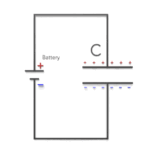Explore the RC circuit equation, its derivation, significance, and applications in electrical engineering with a practical example.
Understanding the RC Circuit Equation
The RC circuit equation is a fundamental concept in electrical engineering, used to describe the behavior of circuits containing resistors (R) and capacitors (C). In this article, we will explore the derivation of the RC circuit equation, its significance, and its various applications in electrical circuits.
Derivation of the RC Circuit Equation
The RC circuit equation can be derived from Kirchhoff’s voltage law (KVL), which states that the sum of voltages around any closed loop in a circuit is equal to zero. For an RC circuit, the loop consists of a resistor, capacitor, and a voltage source.
- When a voltage is applied across an RC circuit, the resistor and capacitor begin to charge or discharge.
- The charging or discharging process causes a voltage drop across the resistor (VR) and capacitor (VC).
- According to KVL, Vsource = VR + VC.
- As the capacitor charges, the current flowing through the resistor (I) is given by I = C * dVC/dt, where C is the capacitance, and dVC/dt is the rate of change of voltage across the capacitor.
- Using Ohm’s Law, VR = I * R.
- Combining steps 3, 4, and 5, we get Vsource = R * C * dVC/dt + VC.
This equation represents the basic RC circuit equation, describing the relationship between the voltage source, resistor, capacitor, and the rate of change of voltage across the capacitor.
Significance of the RC Circuit Equation
The RC circuit equation is significant for several reasons:
- It helps us understand the charging and discharging behavior of capacitors in RC circuits.
- It forms the basis for designing filters and timing circuits, which are essential in various electronic devices and systems.
- It enables us to calculate the time constant (τ), which is a crucial parameter in analyzing the transient response of RC circuits. The time constant is given by τ = R * C.
Applications of the RC Circuit Equation
There are numerous applications of the RC circuit equation in electrical engineering:
- Filters: RC circuits can be used to design low-pass, high-pass, and band-pass filters, which are essential in analog signal processing.
- Timing Circuits: RC circuits can be utilized to create timing circuits, such as monostable and astable multivibrators, which are used in digital systems for generating clock signals and timing delays.
- Integrators and Differentiators: The RC circuit equation plays a vital role in designing circuits that perform mathematical operations like integration and differentiation of input signals, which are widely used in analog computing and signal processing.
In conclusion, the RC circuit equation is a fundamental concept in electrical engineering, providing valuable insights into the behavior of circuits containing resistors and capacitors. Understanding the RC circuit equation enables engineers to design and analyze
Example of RC Circuit Calculation
Let’s consider a simple RC circuit with a resistor (R) of 1 kΩ and a capacitor (C) of 10 μF connected in series, charged by a voltage source of 5 V. We will calculate the time constant (τ), the voltage across the capacitor (VC) at a specific time (t), and the charging current (I) at that time.
- Calculate the time constant (τ): τ = R * C = (1 * 103 Ω) * (10 * 10-6 F) = 10 ms.
- Find the voltage across the capacitor (VC) at a specific time (t): Let’s assume we want to find the voltage across the capacitor after 5 ms (half of the time constant). We can use the formula VC(t) = Vsource * (1 – e-t/τ) = 5 V * (1 – e-5 ms/10 ms) ≈ 3.49 V.
- Calculate the charging current (I) at that time (t = 5 ms): To find the charging current at 5 ms, we can use the formula I(t) = (Vsource – VC(t))/R = (5 V – 3.49 V) / (1 * 103 Ω) ≈ 1.51 mA.
In this example, we calculated the time constant (τ) of the RC circuit, the voltage across the capacitor (VC) at a specific time (t), and the charging current (I) at that time. These calculations illustrate the practical application of the RC circuit equation in analyzing the behavior of an electrical circuit containing resistors and capacitors.



